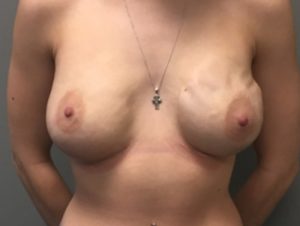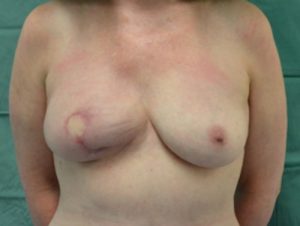BREAST RECONSTRUCTIONS – A GLOBAL VIEW BY DR. ROSS FARHADIEH
Breast cancer is a devastating disease at any age, it affects 1 in 11 Australian women. Despite advances in staging and management, it continues to exact a massive toll on Australian women and their families. Despite advancement in technique, the tell tales of surgical ablation affect the self-image of suffers. In recent years there has been an increasing shift towards more conservative ablative surgery and immediate reconstruction.
There is good psychological evidence that waking up after surgery with a reconstruction helps sufferers avoid a distorted self-image of mutilation by the cancer surgery.
These reconstructions are broadly divided into autologous (body’s own tissues) and alloplastic (implant based) reconstruction. A small group of patients have a combination of both autologous and alloplastic reconstruction. This is not considered ideal, as in a way this trades off what is advantageous in an autologous reconstruction for the disadvantages of implant based reconstructions.
At its simplest, the breast can be thought of as having three components:
- The skin envelope
- The breast Parenchyma
- The Nipple Areolar Complex
Preserving any of these components can help a great deal in recreating an optimal shaped breast. Where the reconstruction is unilateral, often ancillary procedures such as reduction or reduction/matopexy of the contralateral breast, lipofilling post reconstruction for contour deficits help optimise aesthetic outcomes.
The ideal approach is a Multidisciplinary team approach, which includes Oncological general surgeons, plastic surgeons, medical oncologists, radiation oncologists as well as breast cancer care nurses. The best care is offered when each specialist brings their full expertise in treating sufferers of this devastating scourge.
The best and most common form of autologous reconstruction is a variation on the TRAM (Transverse Rectus Abdominis Flap) called the DIEP (Deep Inferior Epigastric Perforator) Flap, which preserves the rectus abdominis (6 pack) muscle. It is my preferred choice for microsurgical reconstruction (Figs 1&2). Other second line options, which I utilise from time to time, include the TUG (Transverse Upper Gracilis) Mycutaneous Flap or the SGAP (Superior Gluteal Artery Perforator) Flap.
Implant based reconstructions have come a long way with evolution of silicone implants and introduction of ADM (Acellular Dermal Matrix) to cover the lower pole of the implants under the skin. In principle implant reconstructions involve lifting and detaching the lower pole of the pectoralis major muscle (similar to dual plane cosmetic surgery breast augmentation techniques), and placement of the implant beneath the muscle. Thus the lower pole of the implant is always left bare. The use of newer ADMs, allow a better shaped lower poles, as well as a considered Firebreak in the formation of implant capsular contractures. There is a catch to this however; there is a conservative increased infection risk of several percentage points.
A good understanding of aesthetic and reconstructive are vital to achieving the best outcome in either case. With collaboration with general surgeons, where possible, I often place the incision at the Infra-Mammary Fold (IMF), longer but similar incisions to cosmetic cases, which yields a significantly superior aesthetic outcome. In our recent series the risk of breast skin necrosis was equivalent to standard peri-areolar and transbreast incision cases, with the patients reporting high satisfaction rates of reconstruction.
Gallery

Immediate Right DIEP Reconstruction

Bilateral Mastectomy and Immediate Implant based reconstruction with Acellular Dermal Matrix










